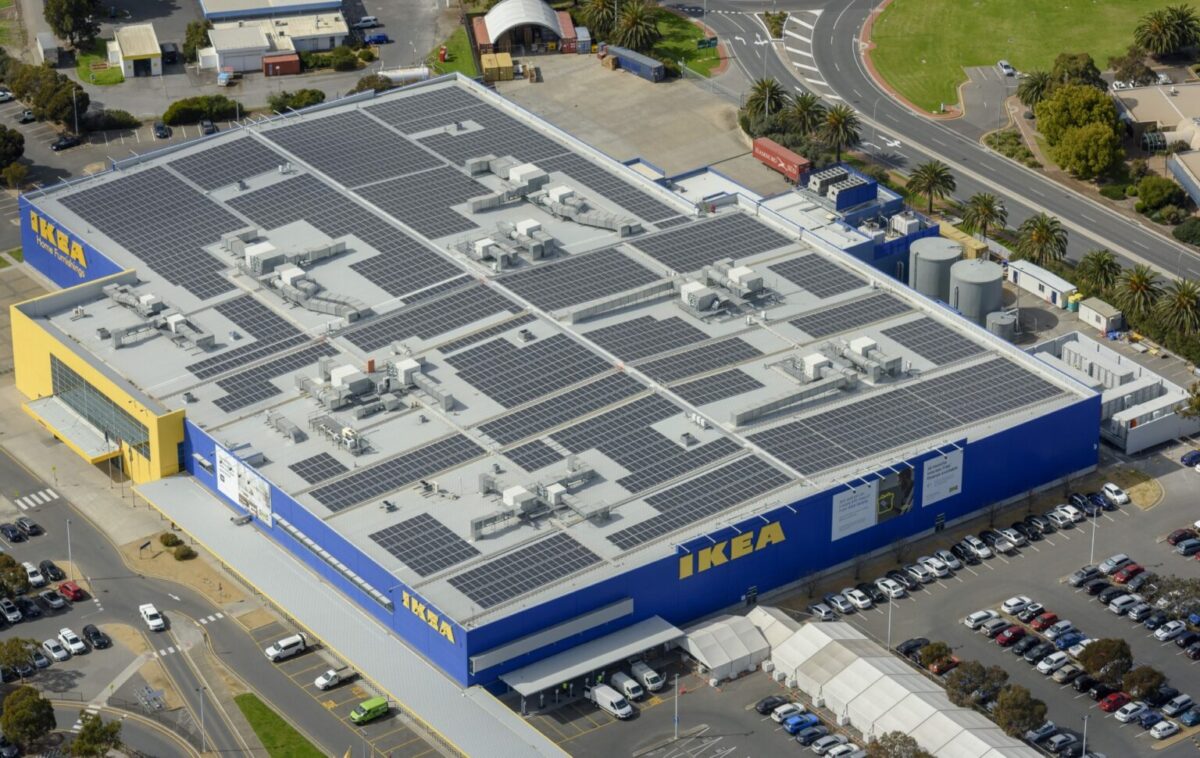The Ikea microgrid features a 1.2 MW rooftop solar system installed across the furniture retailer’s expansive Adelaide store, coupled with a 3 MW/3.45 MWh battery energy storage system backed by Planet Ark Power’s eleXsys energy management system for surplus export.
Designed and built by Planet Ark Power, the AUD 6.6 million ($4.3 million) solar and storage microgrid will be owned and operated by South Australia-headquartered energy infrastructure company Epic Energy. Epic Energy CEO Clive D’Cruz said the system is not only providing power to the Ikea Adelaide store but will also provide support to the South Australia’s electricity network with the battery allowing the operator to ‘time-shift’ solar energy.
D’Cruz said surplus clean energy stored in the microgrid’s battery can be traded on the National Electricity Market (NEM) during hours of peak demand, supporting grid stability and reliability through participation in Frequency Control Ancillary Services (FCAS) markets.
“Investing in Australia’s first-of-its-type urban microgrid supports our offtake partner Ikea in achieving their climate-positive goals while benefiting the local community through supporting grid stability,” he said.
Planet Ark Power Chief Financial Officer Jonathan Ruddick said the integration of the company’s eleXsys technology has transformed the Ikea store into an “unconstrained, grid-connected commercial microgrid.”
“The microgrid not only maximises clean energy generation in SA, but also avoids expensive network upgrades and provides grid support to the state’s electricity network, benefitting the wider South Australian community,” he said. “Use of the eleXsys technology means being able to connect to up to 10 times more energy than solar technology and grid constraints currently allow.”
Ruddick said the capacity to actively trade renewable energy into the South Australian power network also provides a risk-reduced return on investment for the microgrid’s owners.
South Australia has one of the highest rates of rooftop solar penetration in the world, which, combined with wind generation, regularly meets 100% of the state’s energy needs but Department for Energy and Mining Major Projects Director Scott Oster said he is hopeful the project inspires other major retailers to play their part in the state’s energy transition.
“The South Australian government is excited to see this project demonstrate how smart technology will mean we can accommodate more rooftop solar in ways that actually help our grid stability,” he said. “This is another critical step in South Australia delivering a smart energy grid of the future. It is innovative solutions and forward-thinking like this that will be vitally important as we approach our target of 100% renewables by 2030.”
For Ikea, the microgrid will support the company’s goal of 100% renewable energy use at the Adelaide store by 2025.
This content is protected by copyright and may not be reused. If you want to cooperate with us and would like to reuse some of our content, please contact: editors@pv-magazine.com.




Absolutely thrilled to hear about Australia’s largest commercial microgrid going online! This is a monumental step towards a greener and more sustainable future. The commitment to renewable energy and reducing carbon footprint is truly commendable. Kudos to everyone involved in making this project a reality. It’s inspiring to see such innovative solutions paving the way for a cleaner and brighter tomorrow.